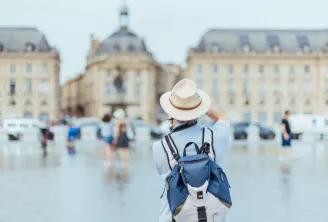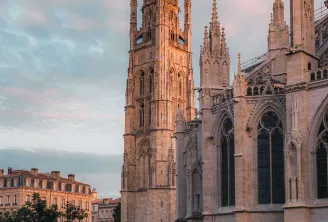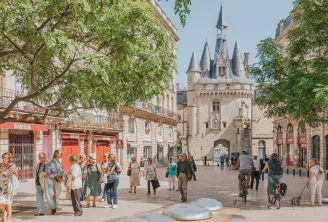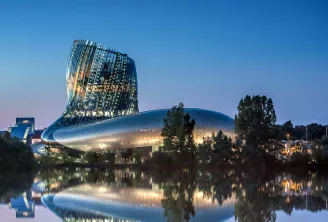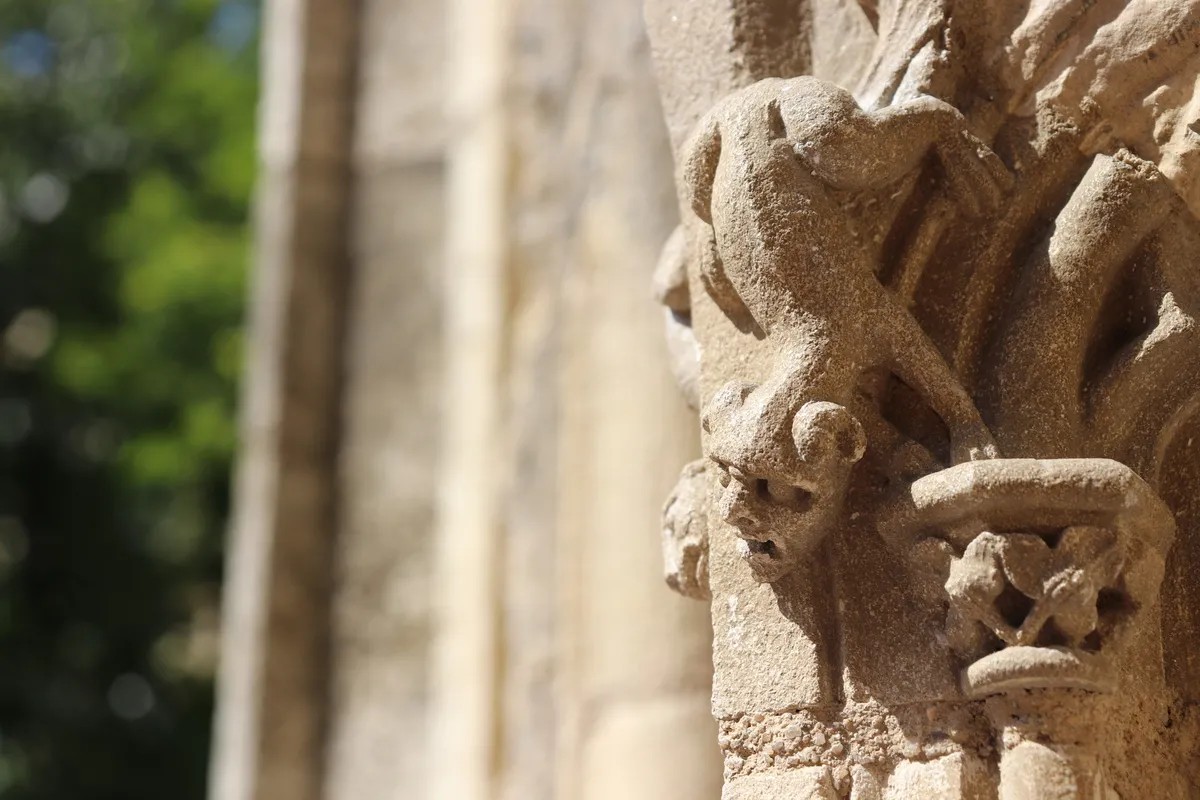
Bordeaux's most beautiful churches
Bordeaux’s churches figure prominently in the city’s urban skyline. Some are majestic and imposing while others are hidden away, however each one is full of treasures and historical treasures. If you want to be plunged deep into Bordeaux’s distant past and amazed by some splendid decoration, all you have to do is look upwards and step through the door. Follow us on a journey around the city as we go from church to church, delving into the history of seven surprising and emblematic edifices.
Church of St.Peter (Église Saint-Pierre)
- Where? Place Saint-Pierre
- Period? 15th- 16th-19th centuries
- Style? Late Gothic or Flamboyant Gothic
The Church of St. Peter was established on the muddy banks of an ancient Roman port at the mouth of a stream, the Devèze, which today runs underground beneath Rue du Cancéra. The church opens out onto the square with its mid-15th century portal, decorated with delicate statues of angels, prophets and apostles. On the right-hand side, you can recognise James the Great by his wide-brimmed hat bearing a scallop, a rallying sign for pilgrims on the Camino de Santiago trail (‘The Way of Saint James’). His right hand points the way...
Inside, three Gothic naves lead visitors to the restored choir, lit by high Flamboyant Gothic windows whose stained glass was crafted by a Bordeaux artisan named Joseph Villiet (1823-1877) and came from the former chapel at Saint James’ Hospital on Rue du Mirail. The windows depict the Life of St. Peter and the Assumption of Mary. A polychrome hanging keystone shows the apostle Saint Peter holding the key to heaven in his right hand.
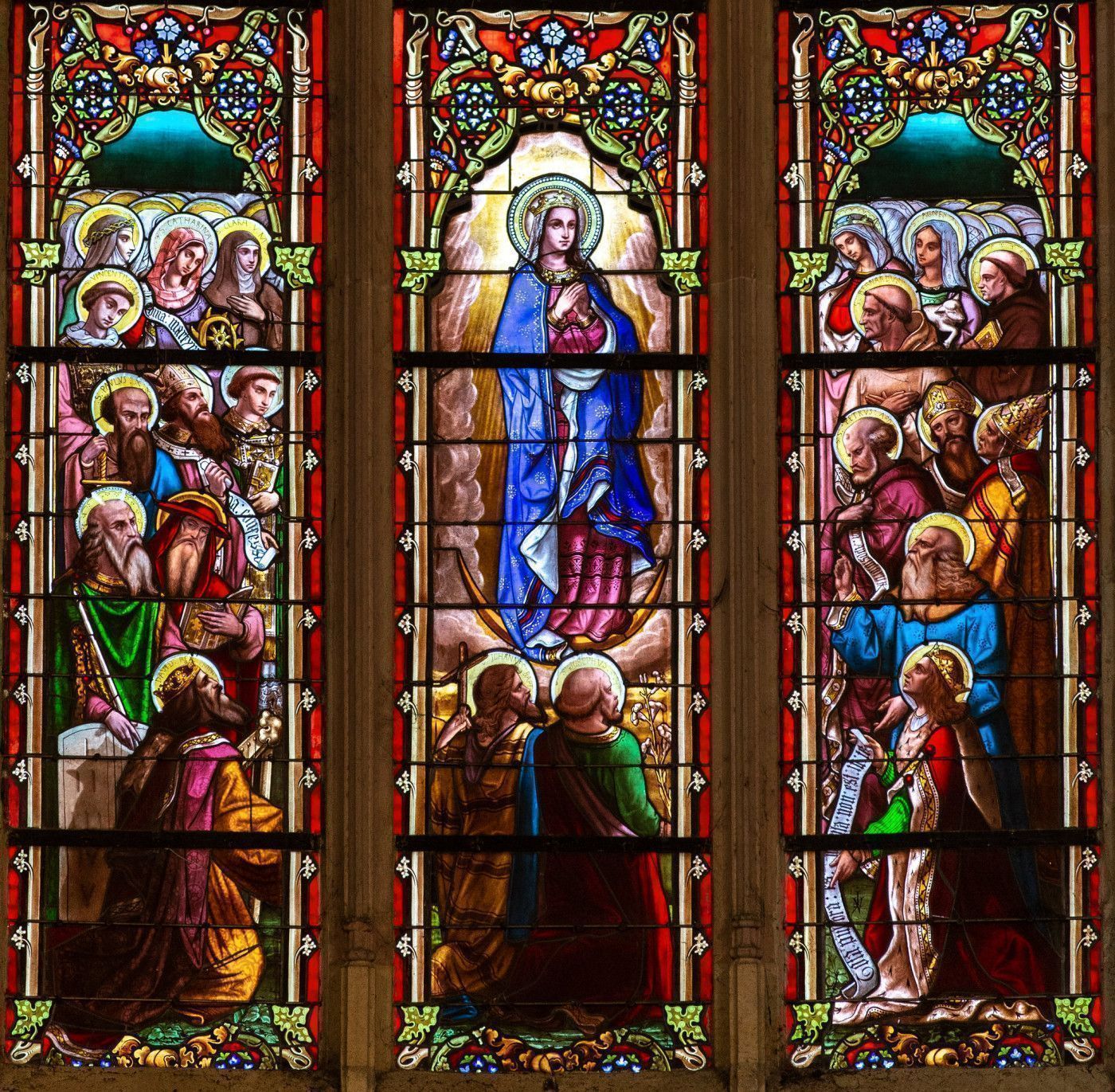
Special features of this church: pieces of a baroque altarpiece that was dismantled in the 17th century decorate the the apse and the lateral naves; statues of St. Peter and St. Paul, a wooden panel representing the Eternal Father and a painting of Jesus handing the keys of the Church to Saint Peter (in the baptismal font), painted by Pierre Nantiac in 1664. Near to the church, a famous bronze statue of Hercules was found in 1832, which can be seen today at the Musée d’Aquitaine.
Church of St. Paul & St. Francis-Xavier (Église Saint-Paul-Francis-Xavier)
- Where? Rue des Ayres
- Period? 17th century
- Style? Jesuit
- Architect? Mathurin Biziou
In 1662, the Jesuits bought the buildings and outhouses of ‘la mairerie’, an unusual French word given to mean the mayor’s residence, or the place where the mayor’s duties were carried out. It was on this site that this edifice - one of the largest Jesuit churches in France and the first in the world to bear the name of ‘Evangelist of the Orient’ - was completed in 1676.
Its facade is typical of churches of its kind; the lower level forms a pattern of Corinthian pilasters whereas the upper level is decorated with buttresses and a triangular pediment. The interior is of a similar ilk: groined arches, arcades, tall bays engraved into the walls, adjoining chapels. Originally, a dome was supposed to sit atop the fifth bay.
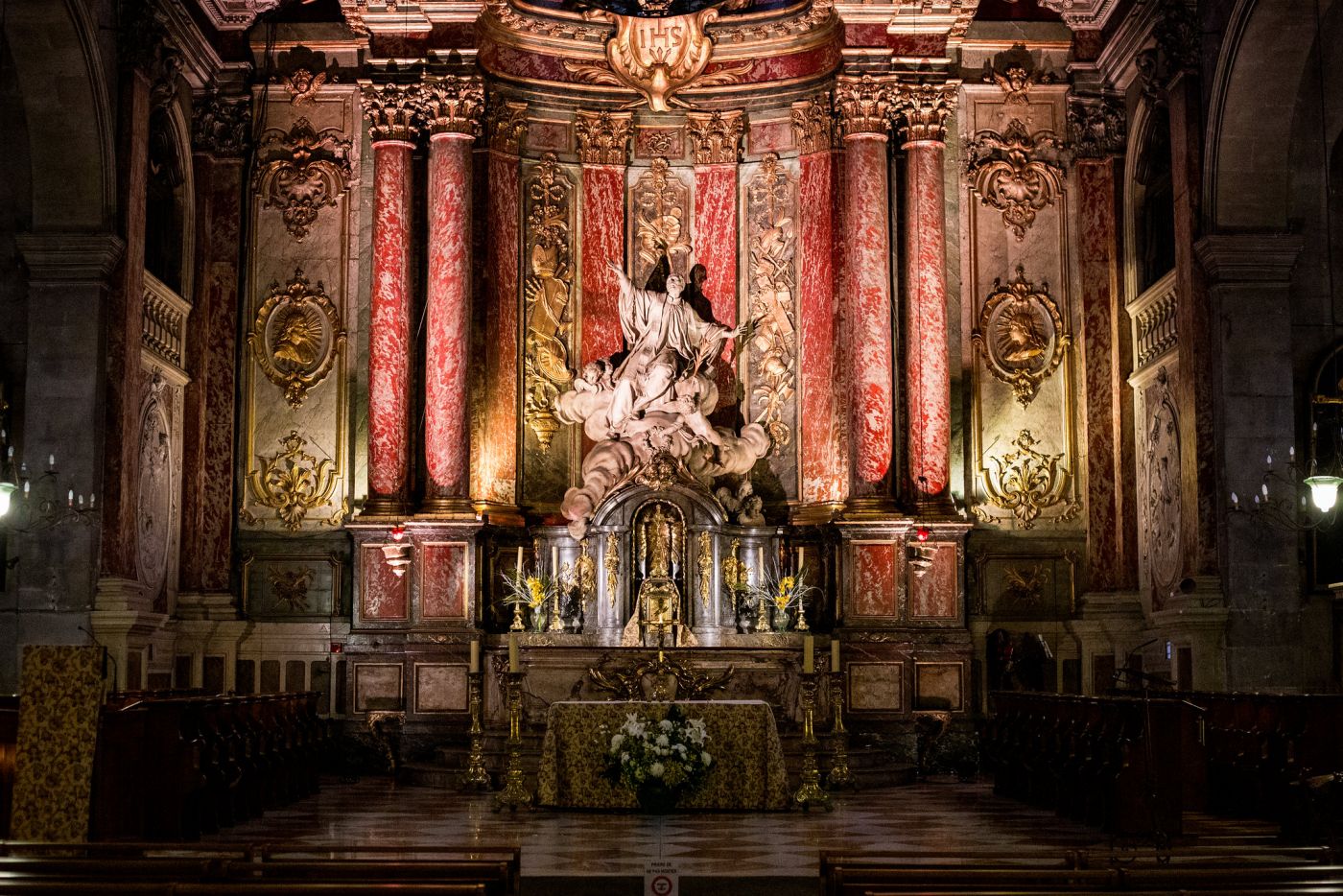
The interior decoration is unique! The real marvel is found at the back of the nave: an altarpiece preceded by a canopy held up by porphyry columns, made by the artisan Pierre Vernet from Bordeaux. In front of this you can find the sculptures of the Apotheosis of Saint Francis-Xavier, crafted by Guillaume Coustou. In the Baroque tradition, the saint is represented in ecstasy, born by cherubs on a cloud.
Another treasure awaits you in the transept, where a triptych is dedicated to the Miracle of Saint Anthony in Vercelli, painted in 1923 by Emile Brunet, an artist from Bordeaux.
In 2006, the sculptor Jean-François Buisson created a gigantic chandelier made out of iron and glass to light the cross-shaped transept. Like censers, large dishes revolve around a central sphere.
Special features of this church: in a courtyard of the Dominican convent, on the left flank of the church, a vestige of the mairerie remains, hidden away. Montaigne stayed here during his mayorship. At the time, a 15 metre-high tower lit by twin bay windows stood high among the surrounding buildings. In the first courtyard, a three-tiered gallery remains as one of the rare examples of Renaissance civil architecture.
Church of Our Lady (Église Notre-Dame)
- Where? Place du Chapelet
- Period? 17th century
- Style? Baroque and classical
- Architect? Pierre-Michel Duplessy
The chapel and Dominican convent located here in the Middle Ages along the Allées de Tourny were demolished in 1678, as they stood within the firing zone of Château Trompette. Reconstruction work for the convent was then carried out until 1707. During the French Revolution, the church lost the moniker of ‘Saint Dominic’s’ and became ‘The Temple of Reason and the Supreme Being’.
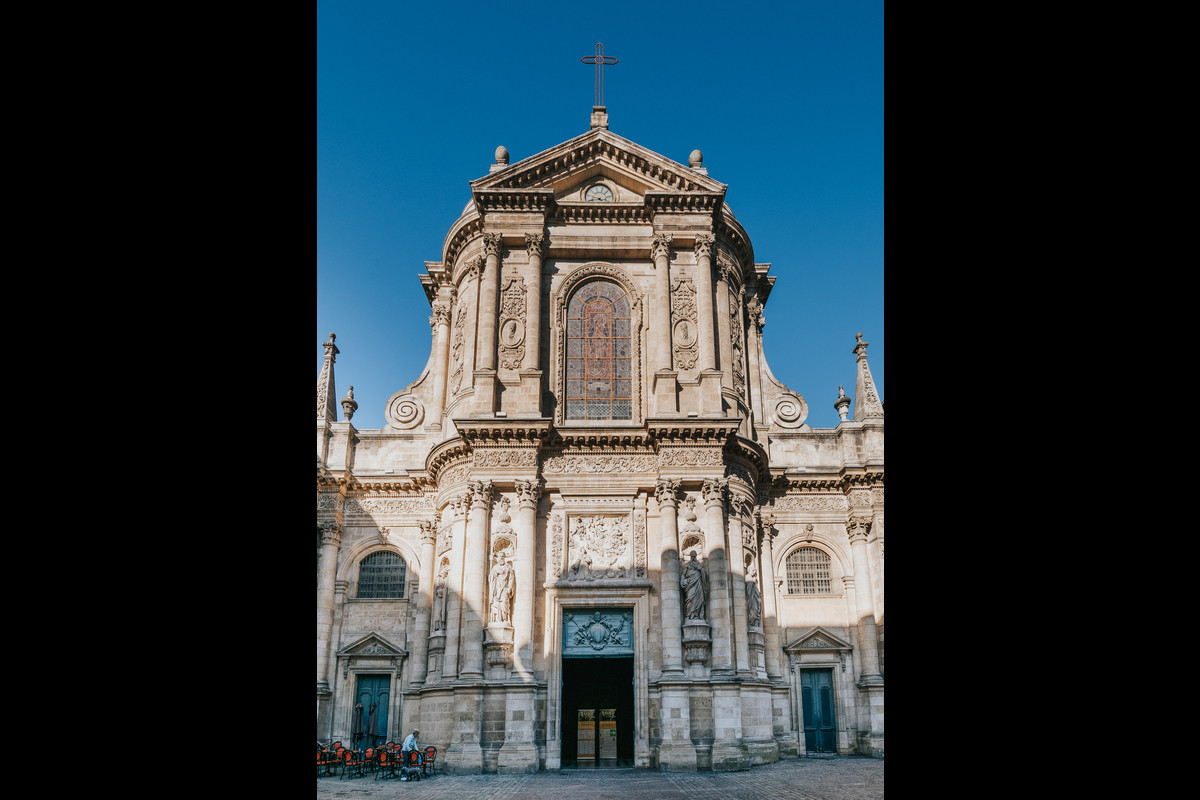
The richly decorated facade is centred around an avant-corps, framed on each side by curved buttresses. Obelisks, firepots, bowls, columns and Corinthian pilasters accentuate its verticality in a movement of elevation that is typical of the Baroque style. It is made all the richer for its abundant decoration of bas-reliefs, statues and ornamental patterns. Above the main entrance, a bas-relief depicts the Virgin Mary giving the rosary to Saint Dominic, flanked by full-length statues of certain Doctors of the Church (Saint Ambrose, Saint Gregory, Jerome and Saint Augustine), remade in 1867 by Edmond Prévôt, a sculptor from Bordeaux.
Juxtaposed to this overabundance of sculptures, the interior architecture is understated: the single-aisled nave is lined on both sides by a row of chapels. The only ostentatious touch to be found inside is the pure stereotomy of the pipe organ with its corbels, squinches and wrought-iron railings.
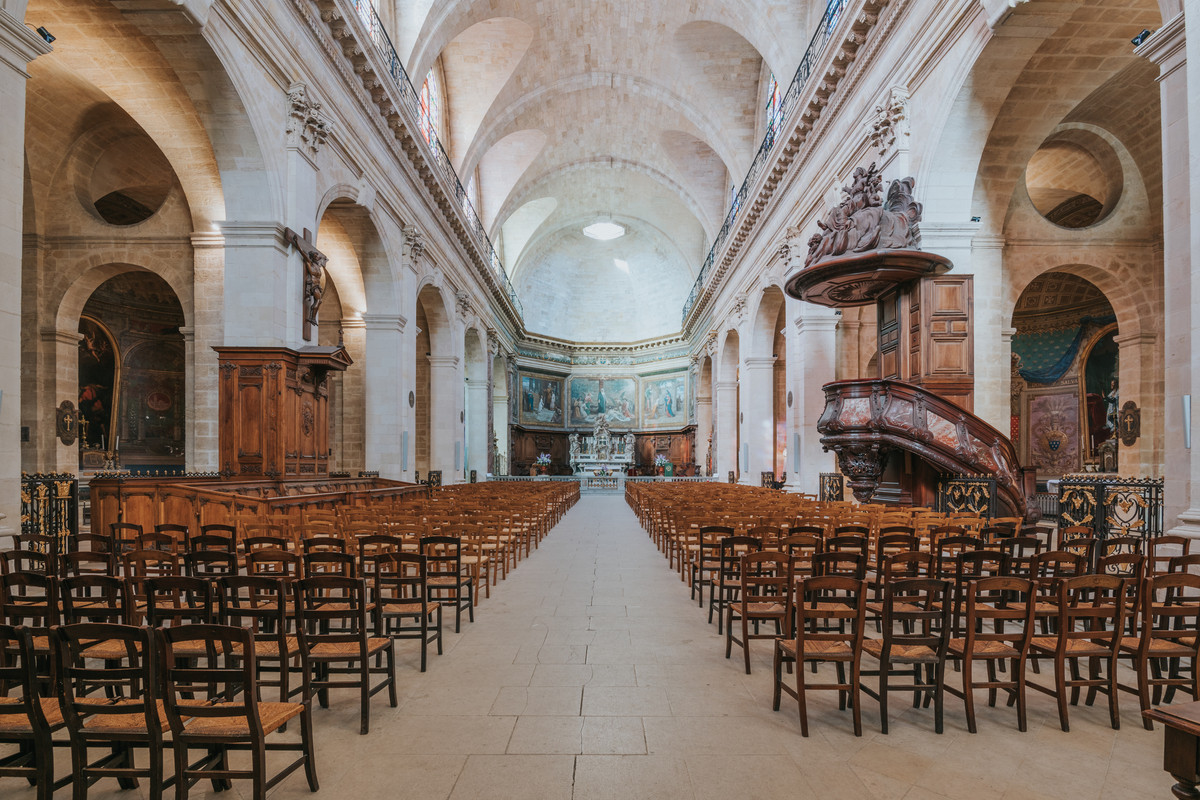
Its furnishings are some of the most homogenous and sumptuous of the city’s churches: the friar Jean André painted most of the chapels’ paintings; Jean-Baptiste Péru sculpted the magnificent white marble altar in 1751; the wrought-iron railings, forged by a local ironworker, Jean Moreau, demonstrate remarkable mastery of the art.
Raymond Caze’s wall paintings - Caze was a student of Ingres - provide splendid decoration for the wall of the choir. A part of the former Dominican convent runs along the church’s right flank, including the cloister and the chapterhouse.
Basilica of St. Michael and its spire (Basilique Saint-Michel)
- Where? Place Duburg
- Period? 14th-15th-16th century
- Style? Gothique flamboyant
- Architect? Jean Lebas
This grand church dedicated to the archangel Saint Michael is one of the largest in Bordeaux. It is home to a surprising number of works of art, thanks partly to financial donations from the neighbourhood’s bourgeoisie but mostly thanks to financing from local corporations who built fourteen chapels along the side aisles. Other benefactors were haberdashers, roofers, sailors, pilgrims, carpenters and merchants.
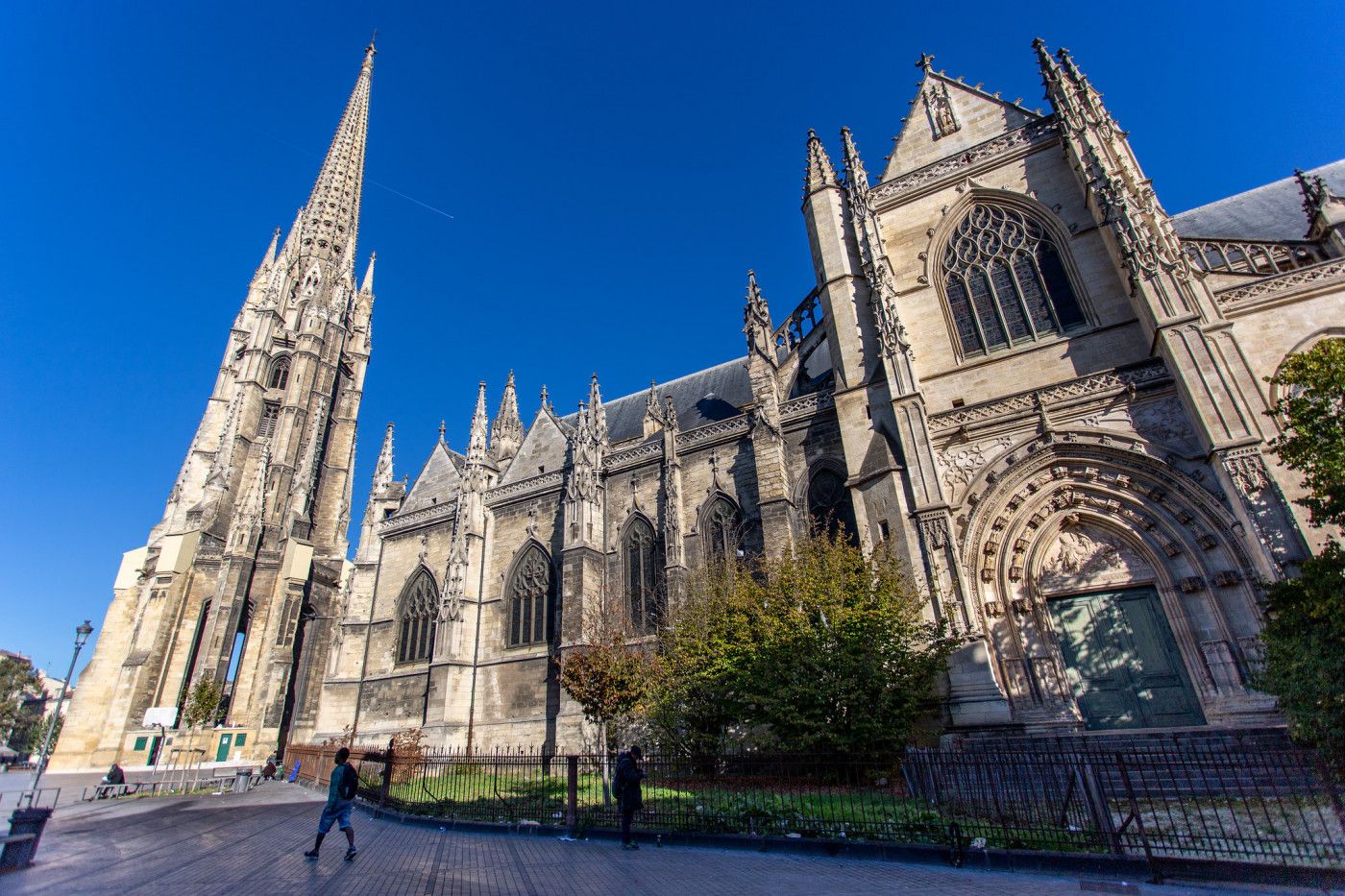
There is no shortage of rich statues: a 15th-century pietà, a Deposition of Christ, the statue of Saint Ursula and eleven thousand Virgin Marys, to say nothing of the altarpiece in Saint Joseph’s chapel, inlay with many alabaster panels, also from the late 15th century.
All of the stained-glass windows were blown out by bombs in the Second World War and then replaced in the 50s and 60s by the craft of Max Ingrand and Gérard Lardeur. A thousand rays of blue, red and orange merge to make a feast for the eyes!
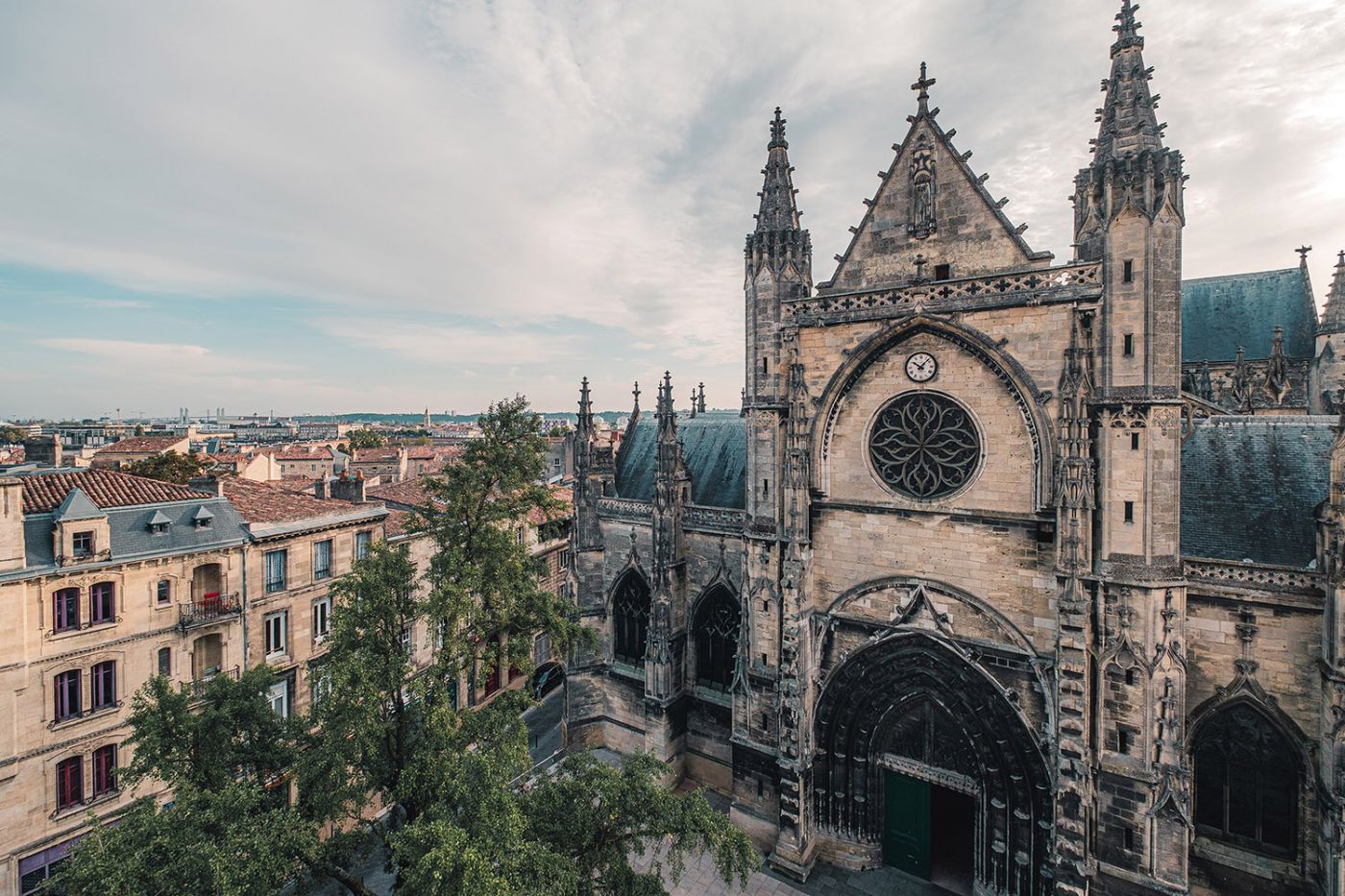
A special feature of this church: the Spire and its mummies
Built in the 14th and 15th century, Bordeaux’s Basilica of St. Michael shares an unusual particularity with Bordeaux’s Cathedral of St. Andrew in that its bell tower stands separate from the church. The spire was built at the end of the 15th century over an old ossuary, where mummies were exhumed from the surrounding cemetery in the late 18th century and placed in a circle in somewhat macabre fashion.
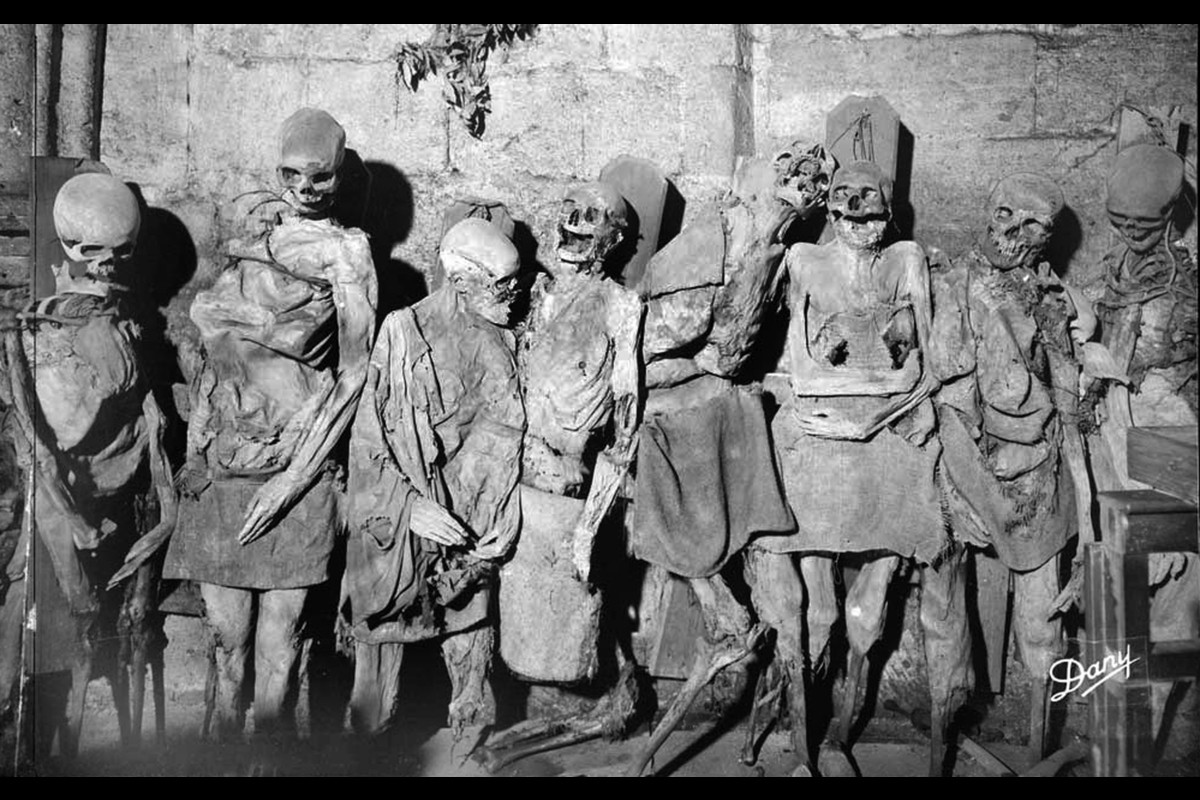
These bodies, rigid and withered, would go on to haunt the imagination of locals and tourists for a long time. The mummies (of which there were almost 70) attracted thousands of visitors, including illustrious writers such as Victor Hugo, Gustave Flaubert, Théophile Gautier and, more recently, Louis-Ferdinand Céline. It is easy to imagine how such a sight may have impacted their writing. This macabre circle lasted until 1990. An audiovisual exhibition retraces the origins of this display that many Bordeaux locals still remember
Church of the Holy Cross (Eglise Sainte-Croix)
- Where? Place Renaudel
- Period? 11th-12th-19th centuries
- Style? Romanesque and Romanesque Revival
- Size: 56 m x 18.45 m
Some call this Bordeaux’s answer to Paris’s Saint-Germain-des-Prés. Much like the Parisian district, this neighbourhood grew around the site of a large monastery, built in the late 10th century: the School of Fine Arts was set up in the old monastic buildings, the Théâtre du port de la Lune to the north on what was once the cemetery and the Conservatoire Jacques-Thibaut where once the monks’ vegetable patch stood...
Despite the transformational work carried out in 1860 by a somewhat conservative architect, the western facade of this church bears witness to the apogee of a Benedictine monastery founded close to the muddy banks of the Garonne. There is some rich iconography relating to traditional themes such as the Elders of the Apocalypse, the Labours of the Months, Zodiac signs and the surprising “rope pullers”.
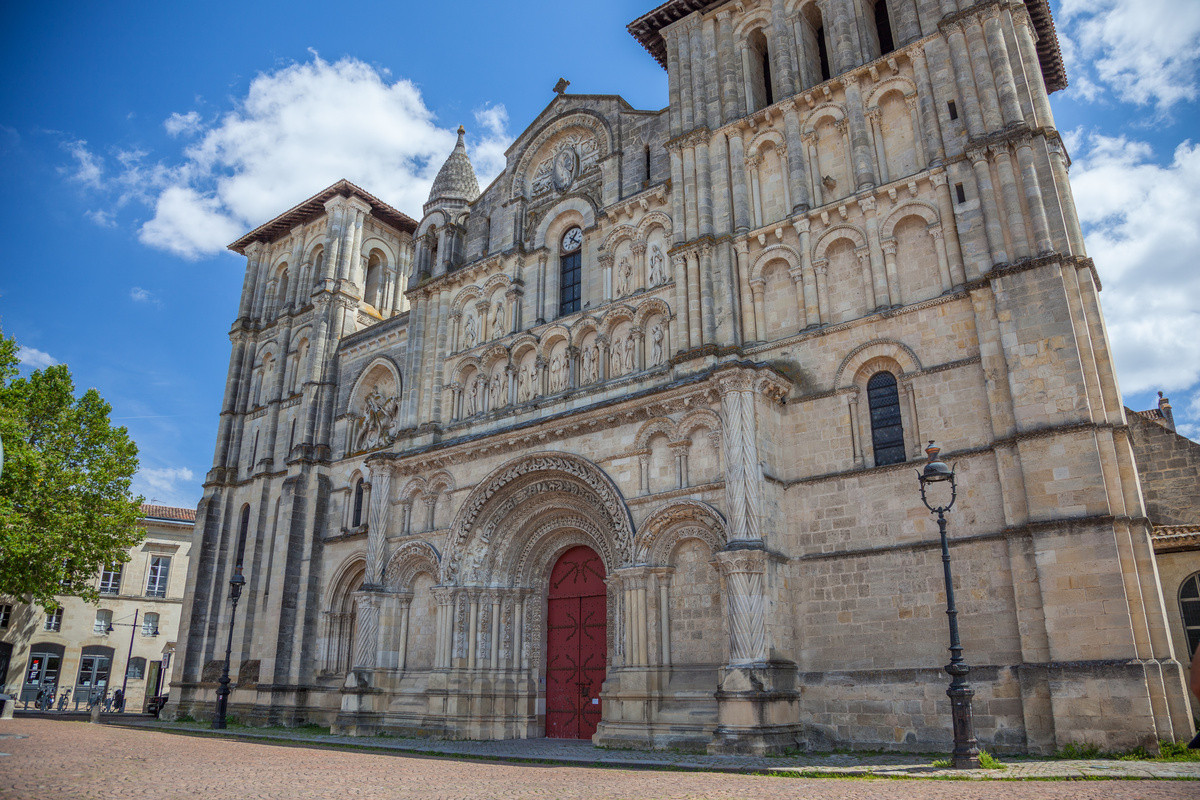
Other authentic vestiges from this large abbey are visible in some of the modern constructions; the beautiful fountain from the monastery garden can be seen in a part of the old city wall that still stands today and a 17th-century gallery is today used as the ground floor for the School of Fine Arts.
Inside, some works of art stand out from the interior’s general austerity: two canvases by Guillaume Cureau, one of which represents Saint Maurus curing an invalid whereas the other one depicts Saint Mommolin healing a possessed person (1647).
This church’s masterpiece has to be the organ, built by Dom Bedos de Celles in 1748. The rococo polychrome organ-chest was restored in 2001.
A special feature of this church: among the treasures of the Church of the Holy Cross are the relics of St. Mommolin - also known as Mommole or Mummolus. It is on the tomb of this holy healer that mentally ill persons are meant to have returned to lucidity. Make no mistake, this was no alternative medicine; ten prayers were held daily for eleven days and eleven nights while the “raving lunatics” fasted on bread and water, chained to the tomb.
Cathedral of St. Andrew (Cathédrale Saint-André)
- Where? Place Pey-Berland
- Period? 11th-13th-14th-16th centuries
- Style? Rayonnant Gothic
- Architect? Jean Deschamps
The Cathedral of St. Andrew is not as impressive in terms of size as the great cathedrals of Ile-de-France, Amiens, Chartres or Reims, however there is something unexpected and unique about its heterogeneous aspect. Consecrated in 1096 by Pope Urban II, in 1137 this cathedral was the site of the wedding of Eleanor of Aquitaine to Louis VII, the future king of France, then five centuries later it witnessed the union of Anne of Austria and Louis XIII.
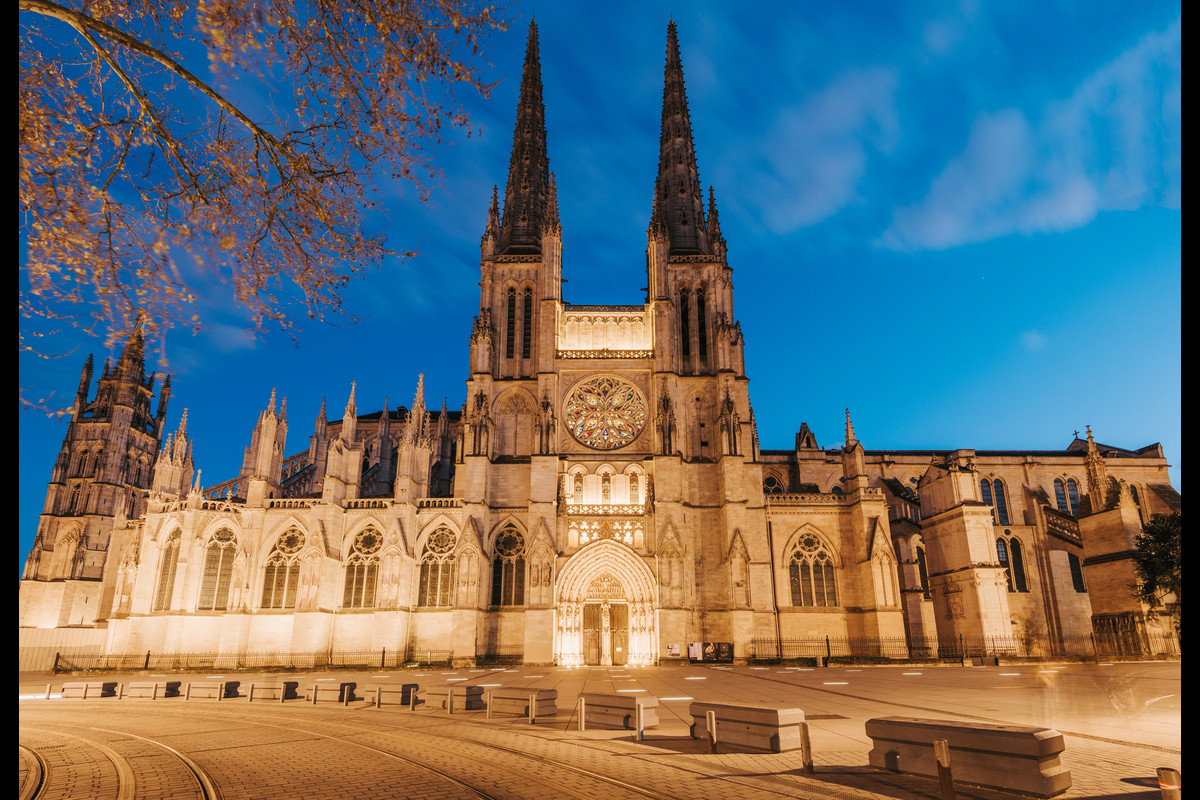
During the Revolution, it became a place of storage for animal feed: a sad destiny for this monument which also suffered a devastating fire in the 19th century, one that meant that its furnishings had to be replaced using those of other parish churches.
In the 19th century, the architect Paul Abadie built sacristies to replace the former Gothic cloister, demolished as part of work carried out to make this part of the building more visible. Standing separately from the edifice, the bell tower - built in 1440 by order of Archbishop Pey-Berland - narrowly escaped demolition after the Revolt of the Pitauds. In the 19th century, a large golden statue of Our Lady of Aquitaine was placed at its peak.
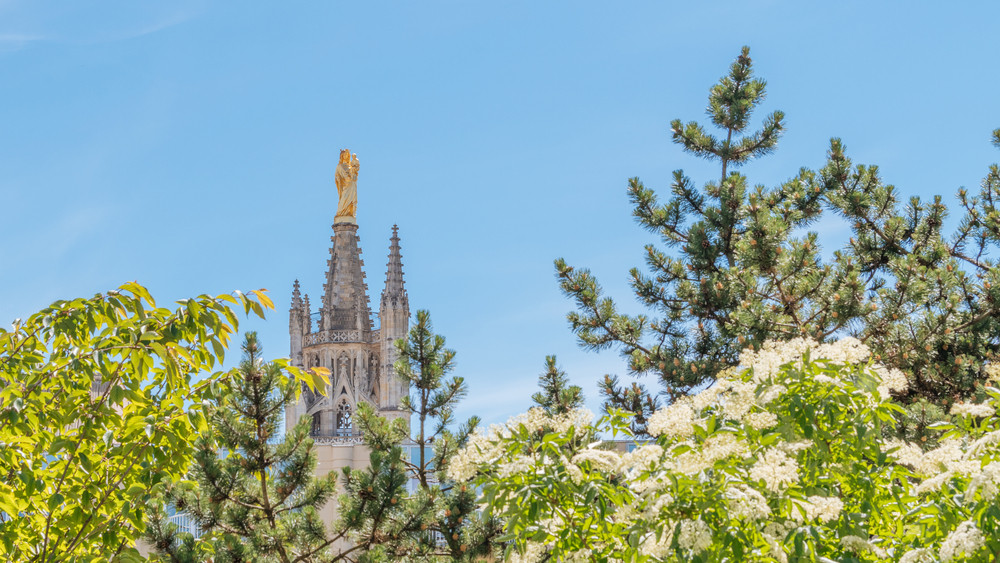
The Royal Portal
Previously hidden behind other buildings, flanked by what is known as the “Gramont” buttress and a 19th-century sacristy, the majestic Royal Portal was built in around 1250 in the pure tradition of the grand Gothic edifices of Paris and the North of France.
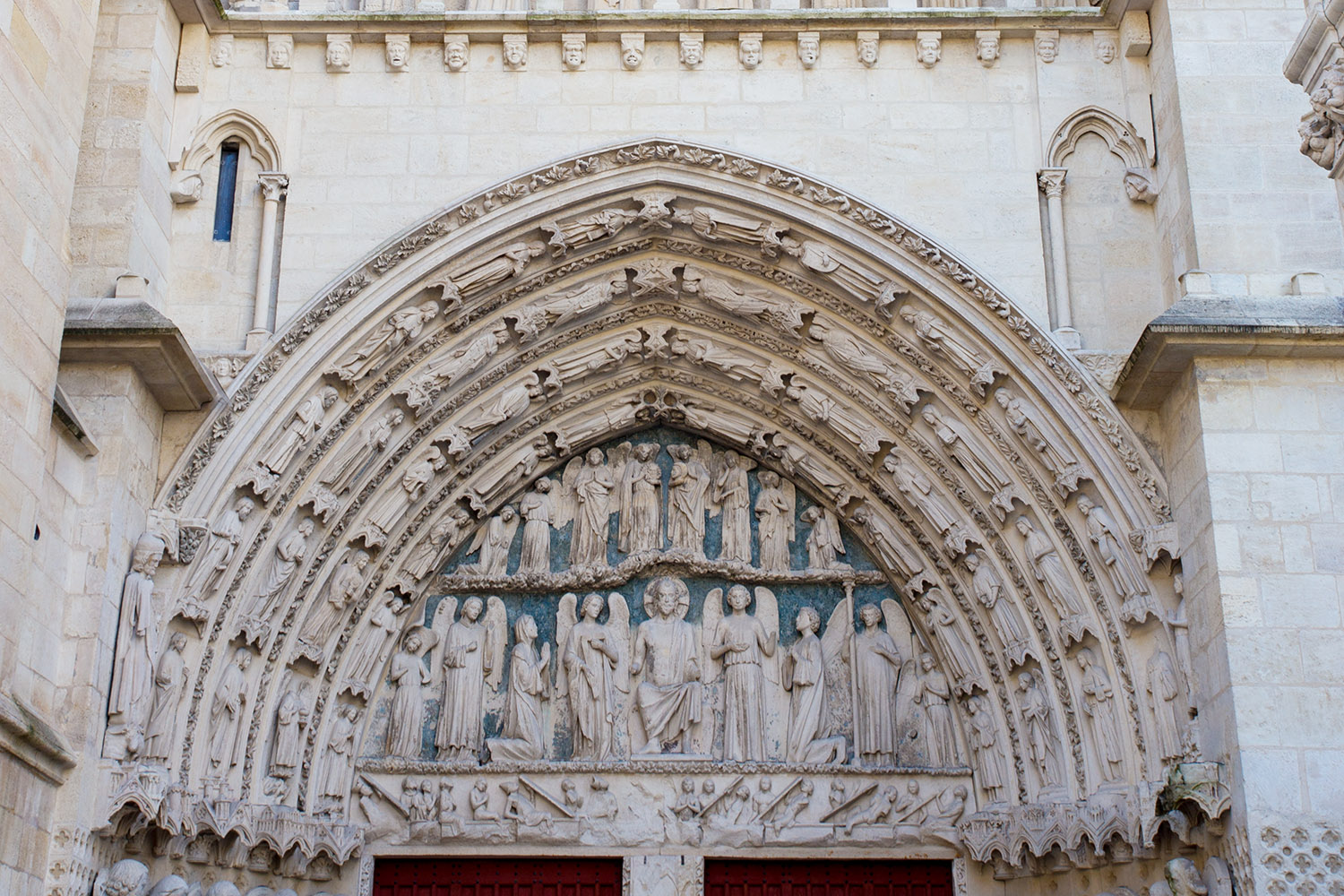
For more than a century, this entrance was hidden behind walls, when the archbishop’s residence was connected to the cathedral, leaving visitors somewhat dissatisfied. In 2014, the two wooden doors were added and important restoration work was carried out on the statues that decorate the portal, where some traces of polychrome were found that had been covered by an ochre coating in the 19th century. The blue from the tympanum was restored and the colour of some eyes are still visible, like those of Jesus Christ. According to researchers from the National Centre for Scientific Research (CNRS), the clothes of each character were white. Only the borders and linings were in colour, as well as the robe of Christ.
The Basilica of Saint Severinus and its Roman necropolis (Basilique Saint-Seurin)
- Where? Place des Martyrs-de-la-Résistance
- Period? 14th-15th-16th century
- Style? Romanesque and Gothic
Traces of ancient history can be found in the heart of the city, such as the vestiges of Bordeaux’s first Christian cemetery, used for almost fourteen centuries. Listed as a UNESCO World Heritage site in the Routes of Santiago de Compostela category, the Basilica of St. Severinus is recognised as the cradle of Christianity in Bordeaux.
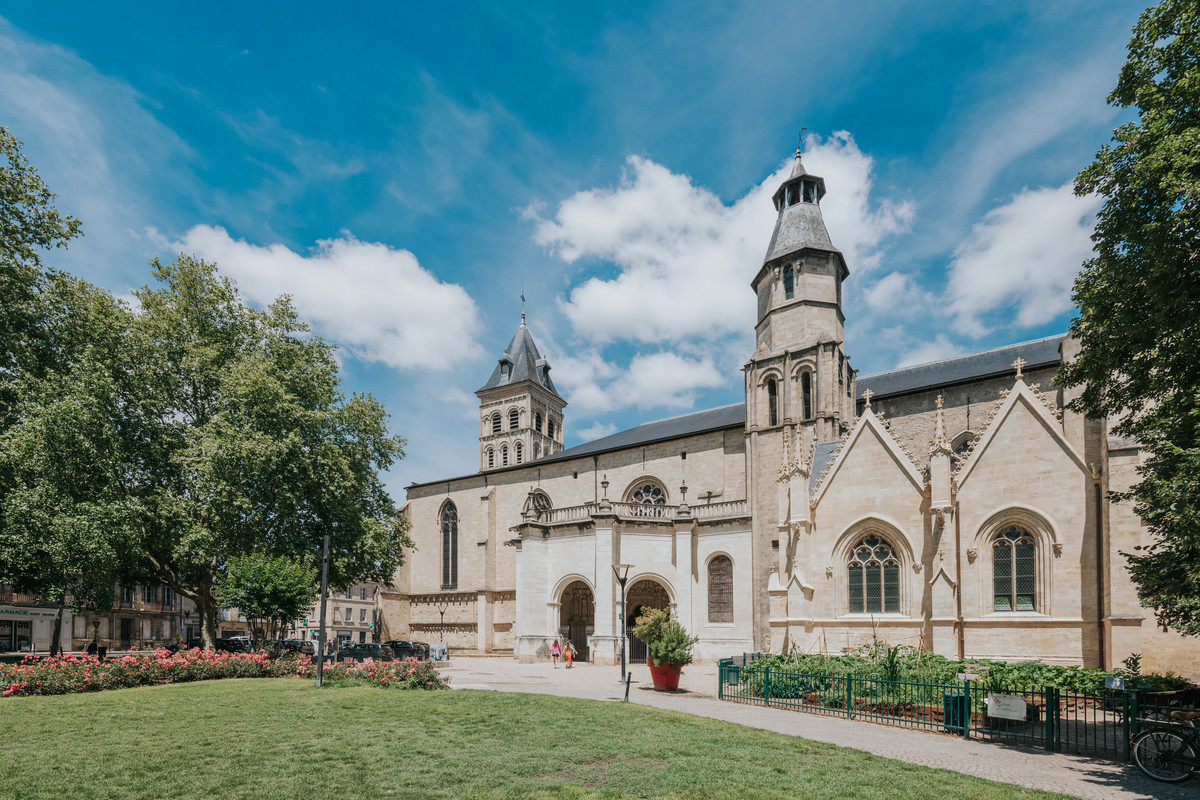
Amid this former necropolis, at the dawn of the 6th century, the converted made their first church and an underground sanctuary to keep what they thought to be the remains of St. Severinus, the city’s fourth bishop. It quickly started to attract a large number of believers. The initial vast Romanesque edifice, extended during the Gothic period, was added to little by little by zealous canons from the collegiate church. They were surrounded by rich furnishings, notably including alabaster plasters that recount the legend of St. Severinus and St. Martial, known as “the Apostle of Aquitaine”.
Roman necropolis
The Roman necropolis, located outside the church close to the south portal, is still visible beneath Place des Martyrs-de-la-Résistance. Among other archeological curiosities, the digs carried out in 1910 unearthed: stone structures, an old funerary enclosure, ancient mausoleums originally covered in marble and decorated with frescos, lidless amphoras which held the remains of young children, sepulchres covered in tiles, as well as limestone and marble sarcophagi for the most powerful.
A special feature of this church: The finds from archeological digs give the church a scientific and historical attraction, but there is also a tantalising legend attached to it; the hearts of some of Charlemagne’s knights are said to have been buried here, and the man himself is said to have placed the Olifant of Roland on the altar here when returning from Spain. The significance of the Cemetery of St. Severinus, equal in importance to that of Alyscamps in Arles, is also hinted at in a chanson de geste from the 13th century.

